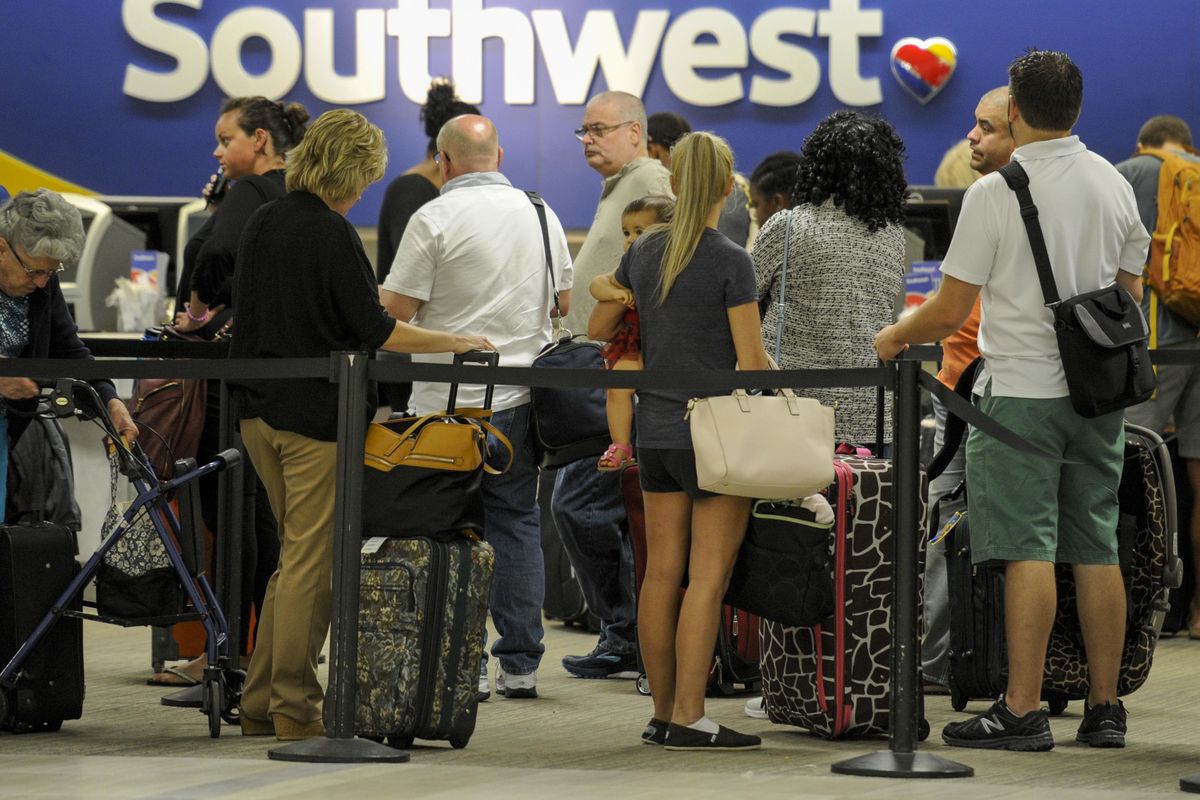Irma lashes at Puerto Rico, leaves tiny Barbuda devastated
Shoppers wait in line for the arrival of a shipment of water during preparations for the impending arrival of Hurricane Irma, Wednesday, Sept. 6, 2017 in Altamonte Springs, Fla. (Joe Burbank / Associated Press)
SAN JUAN, Puerto Rico – Hurricane Irma blacked out much of Puerto Rico as the dangerous Category 5 storm raked the U.S. territory with heavy wind and rain while staying just out to sea, and it headed early Thursday toward the Dominican Republic and Haiti.
To the east, authorities struggled to get aid to small Caribbean islands devastated by the storm’s record 185 mph winds earlier Wednesday, while people in Florida rushed to get ready for a possible direct hit on the Miami area.
Communications were difficult with areas hit by Irma, and information on damage trickled out.
Nearly every building on Barbuda was damaged when the hurricane’s core crossed almost directly over the island early Wednesday and about 60 percent of its roughly 1,400 residents were left homeless, Antigua and Barbuda Prime Minister Gaston Browne told the Associated Press.
“It is just really a horrendous situation,” Browne said after returning to Antigua from a plane trip to the neighboring island.
He said roads and telecommunications systems were wrecked and recovery would take months, if not years. A 2-year-old child was killed as a family tried to escape a damaged home during the storm, Browne told the AP.
On St. Thomas in the U.S. Virgin Islands, Laura Strickling spent 12 hours hunkered down with her husband and 1-year-old daughter in a boarded-up basement apartment with no power as the storm raged outside. They emerged to find the lush island in tatters. Many of their neighbors’ homes were damaged and once-dense vegetation was largely gone.
“There are no leaves. It is crazy. One of the things we loved about St. Thomas is that it was so green. And it’s gone,” Strickling said. “It will take years for this community to get back on its feet.”
Significant damage was also reported on St. Martin, an island split between French and Dutch control. Photos and video circulating on social media showed major damage to the airport in Philipsburg and the coastal village of Marigot heavily flooded. France sent emergency food and water there and to the French island of St. Bart’s, where Irma ripped off roofs and knocked out electricity. Dutch marines who flew to St. Martin and two other Dutch island reported extensive damage but no deaths or injuries.
By late Wednesday, the center of the storm was about 85 miles northwest of San Juan, Puerto Rico, and moving to the west-northwest at 16 mph.
More than half the island of Puerto Rico was without power, leaving 900,000 in the dark and nearly 50,000 without water, the U.S. territory’s emergency management agency said in the midst of the storm. Fourteen hospitals were using generators after losing power, and trees and light poles were strewn across roads.
Puerto Rico’s public power company warned before the storm hit that some areas could be left without power from four to six months because its staff has been reduced and its infrastructure weakened by the island’s decade-long economic slump.
State maintenance worker Juan Tosado said he was without power for three months after Hurricane Hugo in 1989. “I expect the same from this storm. It’s going to be bad,” he said.
President Donald Trump approved an emergency declaration for the U.S. Virgin Islands and Puerto Rico, allowing the Federal Emergency Management Agency and other agencies to remove debris and give other services that will largely be paid for by the U.S. government.
Pauline Jackson, a 59-year-old registered nurse from Florida visiting Puerto Rico, said she had tried to leave before the storm but all flights were sold out.
She has a reservation to fly out Friday and is worried about her home in Tampa. “When you’re from Florida, you understand a Category 5 hurricane,” she said.
The U.S. National Hurricane Center predicted Irma would remain at Category 4 or 5 for the next day or two as passes just to the north of the Dominican Republic and Haiti on Thursday, nears the Turks & Caicos and parts of the Bahamas by Thursday night and skirts Cuba on Friday night into Saturday. It will then likely head north toward Florida.
The storm is expected to hit Florida sometime Sunday, and Gov. Rick Scott said he planned to activate 7,000 National Guard soldiers by Friday. He warned that Irma is “bigger, faster and stronger” than Hurricane Andrew, which wiped out entire neighborhoods in south Florida 25 years ago.
Experts worried that Irma could rake the entire Florida east coast from Miami to Jacksonville and then head into Savannah, Georgia, and the Carolinas, striking highly populated and developed areas.
“This could easily be the most costly storm in U.S. history, which is saying a lot considering what just happened two weeks ago,” said Brian McNoldy, a hurricane researcher at the University of Miami.








